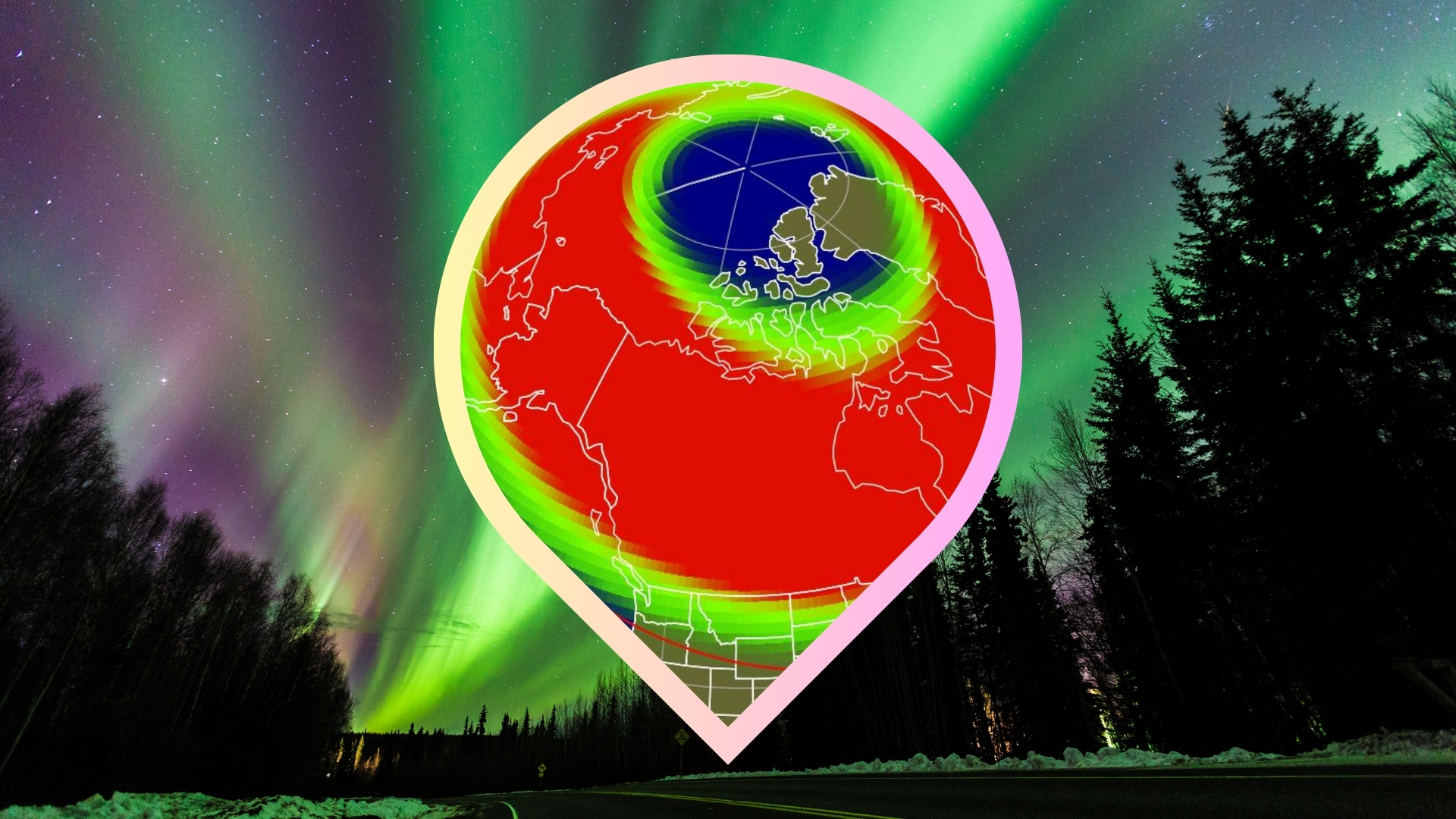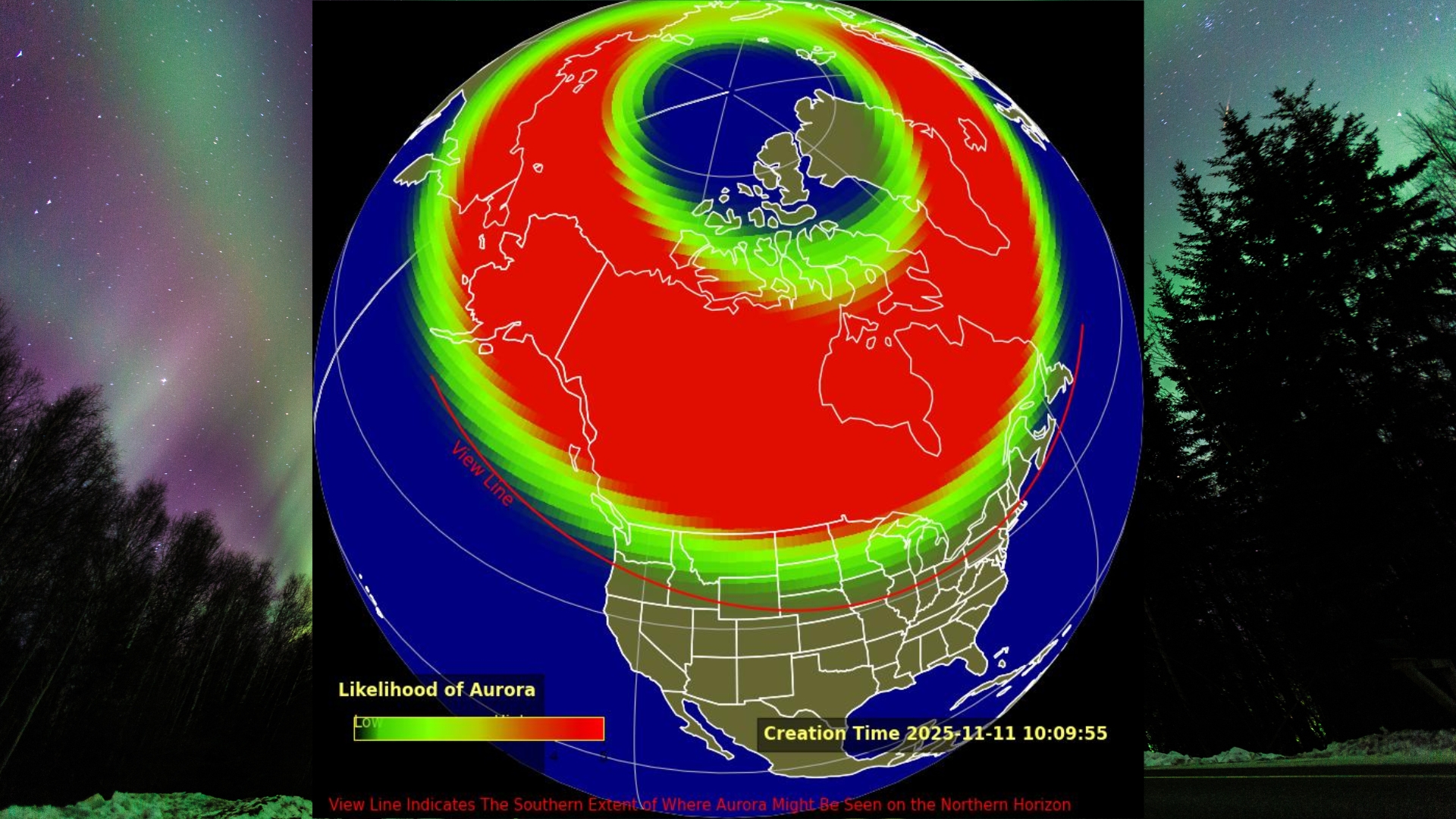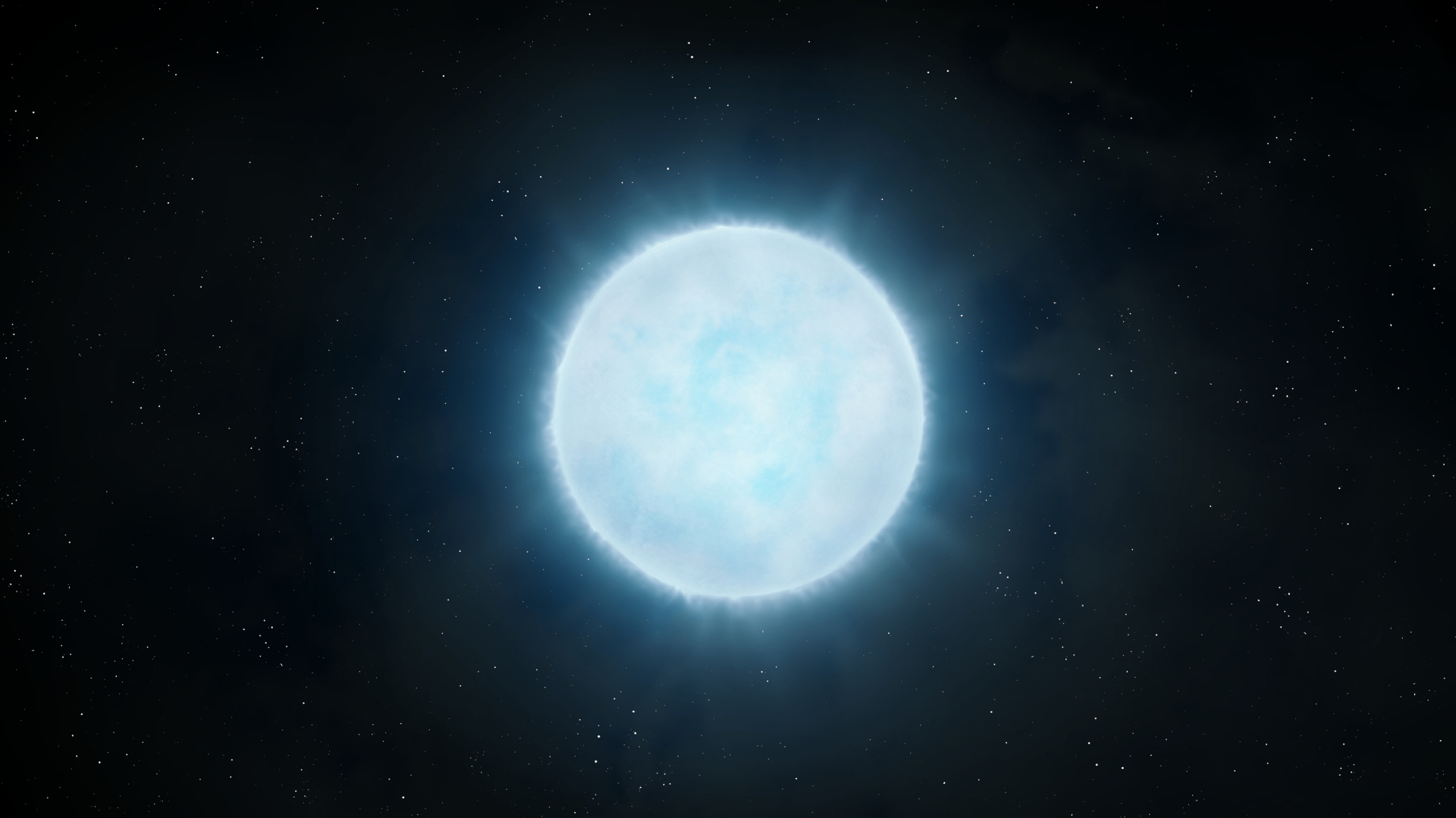Northern lights may be visible in 21 US states Nov. 11
Auroras may be visible from Alaska to Indiana as two incoming coronal mass ejections could spark geomagnetic storm conditions overnight.

Editor's note: Wow, the northern lights put on a stunning display last night with auroras reported as far south as Mexico! See the best photos here in our wrap story. Conditions are also looking promising tonight as we await the third CME impact. Check out our most recent article with the latest forecast and list of states that could see auroras tonight.
Heads up aurora chasers! The northern lights could put on a spectacular show tonight (Nov. 11-12) as two incoming coronal mass ejections (CMEs) may spark geomagnetic storm conditions, according to the National Oceanic and Atmospheric Administration (NOAA).
Space weather forecasters anticipate that geomagnetic activity may intensify to strong (G3) conditions overnight.
The first CME, launched on Nov.9, is forecast to reach Earth late tonight, closely followed by a second CME that erupted yesterday. A third CME released during a colossal X5.1 solar flare, the biggest solar flare of 2025, is currently hurtling toward Earth and could also hit Earth on Nov. 12, according to NOAA. Impact from this CME is predicted for around 7 a.m. EST (1200 GMT). NOAA has since issued a G4 storm watch for Nov. 12.
Where can I see the northern lights tonight?
States that could see auroras tonight
Based on the latest NOAA aurora forecast map, the following 21 U.S. States appear fully or partially above the aurora view line:
- Alaska
- North Dakota
- Minnesota
- Montana
- Wisconsin
- Michigan
- Maine
- South Dakota
- Idaho
- Vermont
- Washington
- New Hampshire
- Wyoming
- New York
- Iowa
- Massachusetts
- Pennsylvania
- Nebraska
- Ohio
- Illinois
- Indiana
But remember, auroras are fickle; sometimes they appear much farther south than predicted, and other times they barely show up at all. Many conditions have to align for the perfect display.
Northern Hemisphere aurora forecast courtesy of the U.K. Met Office
What time should I look for auroras tonight?
The northern lights could be visible across 21 U.S. states tonight (Nov. 11-12) as soon as it gets dark, so it's worth keeping an eye on the sky throughout the evening, especially in areas with clear, dark skies and minimal light pollution.
Breaking space news, the latest updates on rocket launches, skywatching events and more!
According to NOAA's 3-day forecast, geomagnetic storm activity is expected to stay high with the best chances of auroras during the following key times tonight:
- 4 p.m. - 10 p.m. EST (2100-0300 GMT): Minor (G1) to moderate (G2) storm levels possible.
- 10 p.m. - 1 a.m. EST (0300-0600 GMT): Strong (G3) storm levels possible.
How can I see the northern lights from where I live?
If you live in one of the 21 U.S. states forecast to catch a glimpse of the northern lights tonight, there are a few things you can do to give yourself the best chance of seeing them.
- Find a north-facing vantage point with a clear view of the horizon as far from light pollution as possible.
- Use your phone camera to scan the sky as the camera is great at picking up faint auroras before your eyes spot them. This will give you a good idea of the direction you should be focusing your attention.
- Try to let your eyes adapt to the dark for at least 30 minutes; this will help your night vision develop.
- Wear warm clothing! Part of the fun of aurora hunting is the chase. Be prepared to sit or stand for hours if conditions are looking promising, as you won't want to miss the show when it starts!

We recommend downloading a space weather app that provides aurora forecasts based on your location. One option I use is "My Aurora Forecast & Alerts," available for both iOS and Android. However, any similar app should work well. I also use the "Space Weather Live" app, which is available on iOS and Android, to get a deeper understanding of whether the current space weather conditions are favorable for aurora sightings.

Daisy Dobrijevic joined Space.com in February 2022 having previously worked for our sister publication All About Space magazine as a staff writer. Before joining us, Daisy completed an editorial internship with the BBC Sky at Night Magazine and worked at the National Space Centre in Leicester, U.K., where she enjoyed communicating space science to the public. In 2021, Daisy completed a PhD in plant physiology and also holds a Master's in Environmental Science, she is currently based in Nottingham, U.K. Daisy is passionate about all things space, with a penchant for solar activity and space weather. She has a strong interest in astrotourism and loves nothing more than a good northern lights chase!
You must confirm your public display name before commenting
Please logout and then login again, you will then be prompted to enter your display name.

